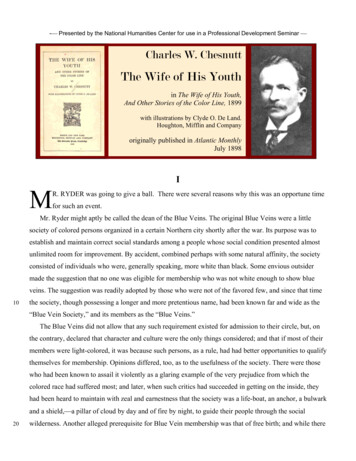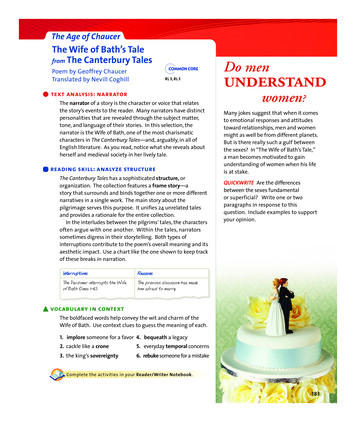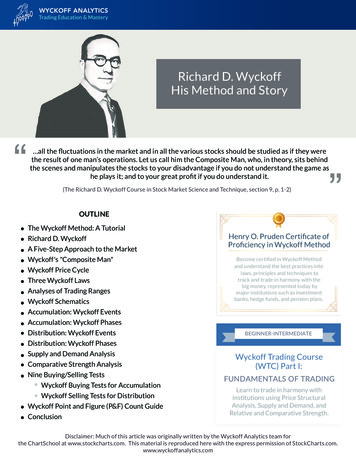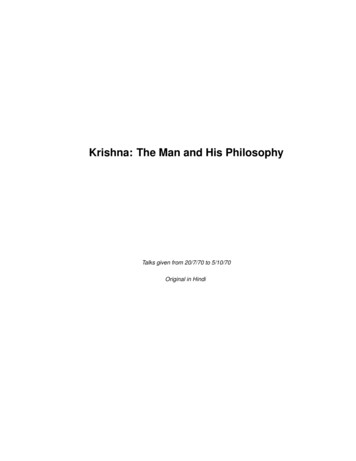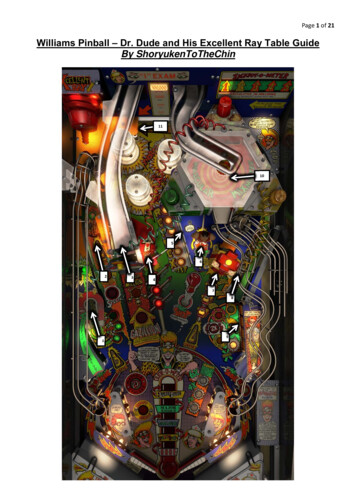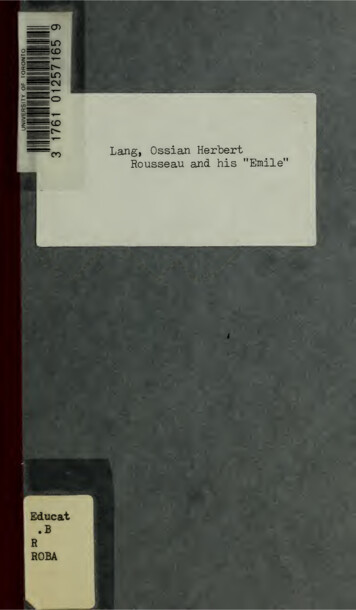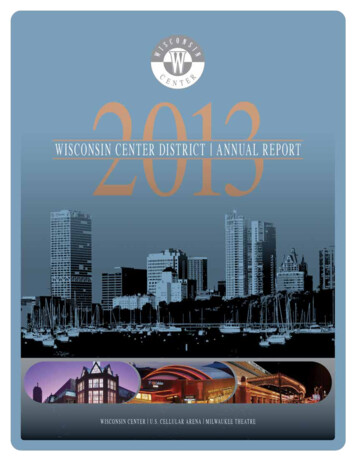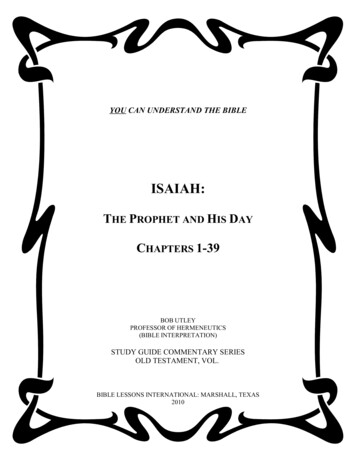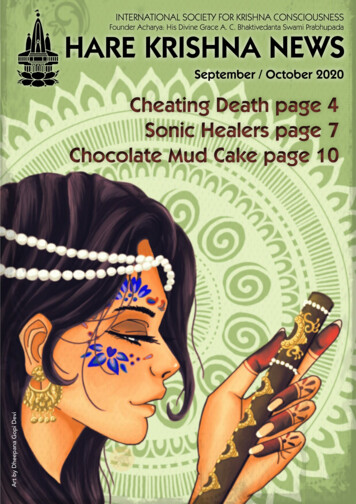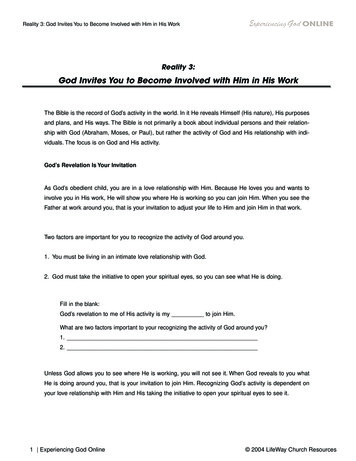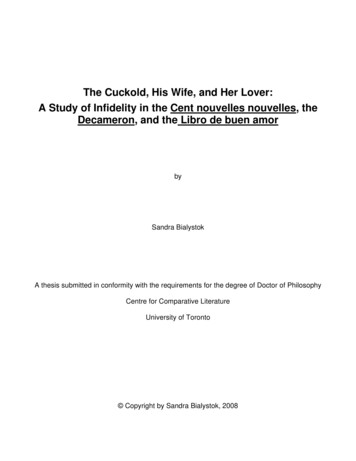
Transcription
The Cuckold, His Wife, and Her Lover:A Study of Infidelity in the Cent nouvelles nouvelles, theDecameron, and the Libro de buen amorbySandra BialystokA thesis submitted in conformity with the requirements for the degree of Doctor of PhilosophyCentre for Comparative LiteratureUniversity of Toronto Copyright by Sandra Bialystok, 2008
The Cuckold, His Wife and Her Lover:A Study of Infidelity in the Cent nouvelles nouvelles, theDecameron, and the Libro de buen amorSandra BialystokDoctor of PhilosophyCentre for Comparative LiteratureUniversity of Toronto2008AbstractThis dissertation compares representations of women in erotic triangles. I contend thatdespite the stability implied by the triangular shape, the erotic triangle can be made unstablethrough women’s language.The first chapter examines medieval and contemporary writing on an essentialrelationship in the triangle: the friendship between the husband and the lover. Amicitia, chastefriendships between men, had its roots in Greek and Latin philosophy, and recently theserelationships have been investigated according to mimetic desire (Girard) or homosocial desire(Sedgwick). In both medieval and modern configurations, these relationships are usuallypredicated upon the exchange of women. Claude Lévi-Strauss, Gayle Rubin and Luce Irigarayprovide anthropological and literary explorations of the economic model where men exchangewomen to strengthen their homosocial bond.In the three texts, women use linguistic techniques to destabilize the erotic triangle. Oneis irony: frequently, one character does not understand an ironic statement and is excluded fromthe relationship between the other two participants. A second is pragmatic implicature, which isii
also used for exclusionary purposes. Other women adopt economic terminology to negotiatewith their husbands or lovers for control of their bodies. Through these linguistic deviceswomen speak exclusively to another member of the triangle, thereby undermining malefriendships and denying their bodies be used as objects of exchange.Although their strategies are not always successful and some women remainexchangeable objects, we nevertheless see that erotic triangles can be destabilized.Furthermore, counter to the prevailing anthropological theory, certain women are aware of theirposition as commodities. From this insight, a new perspective on sexuality is exposed. Theformerly strong male relationship, built on classical ideals and predicated on equality, breaksdown when one man’s virility is pitted against his rival’s. Sometimes even, the supposedlychaste male relationship reveals erotic undertones. Women’s sexuality is also transformed whencertain women prove to be desiring subjects, able to manipulate the system of exchange.In the end, institutionalized notions of chaste male friendships and women as objects ofexchange are disrupted, sometimes even undermined, by capable women who determine whoshould have access to their bodies.iii
AcknowledgementsIn theory, writing a dissertation is a solitary pursuit, but my own experience has been farfrom lonely. Instead, as a student at the Centre for Comparative Literature, I have fostered anumber of important relationships with many people. I would especially like to thank mysupervisor Jill Ross, whose classes on ‘The Body’ and ‘Feminism and Medieval Literature’inspired a great part of this dissertation, and who has encouraged this project since I set foot atthe Centre. I am also indebted to my colleagues on the 14th floor for their support andfriendship. I am particularly grateful to Emilie McCabe who willingly shared her office and herthesaurus-like mind with me. My thanks also to Aphrodite Gardner and Bao Nguyen who havehelped me cross all the bureaucratic matters that stand in a student’s way.Outside the Centre, I was greatly supported by my committee members, Suzanne Akbari,Olga Pugliese, and William Robins, all of whom offered revealing insights and carefulcomments.Throughout the experience, my family has been invaluable. From my parents, Ellen andFrank, both of whom have written theses of their own, I counted on much needed advice and adeep understanding of the dissertation process. From my sister Lauren, who is working throughher own dissertation, I relied on a sympathetic ear and a critical eye. Most of all, from myhusband Nicolas, I counted on constant support, companionship, and balance. But thisdissertation is dedicated to my grandfather, Louis, who always wanted to know what I wasthinking, and to Raphael, who is truly my most perfect creation.iv
Table of ContentsTitle Page . iAbstract. iiAcknowledgements. ivTable of Contents. vList of Figures. viiList of Appendices. viiiIntroduction: The Problem of Medieval Feminism . 1The Ubiquitous Erotic Triangle . 10History-as-Continuity . 19Chapter 1: Male Friendships and the Exchange of Women – Medieval and Current Approaches. 21Part 1: Building the Erotic Triangle: Homosocial Relationships and The Exchange of Women. 24Amicitia Perfecta: Classical and Medieval. 25Marriage and the Exchange of Women . 35Reading the Medieval in Light of the Modern . 42Male Friendship and the Exchange of Women in the 20th Century: Six Perspectives . 43Part II: Reading Amicitia and Male Homosocial Desire in Medieval Texts . 67Sedgwick and Medieval Literature. 67Review of Criticism in French Literature. 71Review of Criticism in Italian Literature. 82Review of Criticism in Spanish Literature . 89Conclusion: From the Exchange of Women and Amicitia to the Destabilized Triangle. 90Chapter 2: The Cent nouvelles nouvelles . 93Introduction . 93Se Divertir: Deceit, Laughter and the Pleasure of Storytelling . 96Intentional misrepresentation: Irony and its uses . 107v
Scenario 1: Building Triangles Through Conversational Implicature. 119Scenario 2: The art of seduction and the formation of homosocial bonds . 124Scenario 3: When men willingly share the same woman . 129Conclusion: Developing and Disturbing the Erotic Triangle . 138Chapter 3: The Decameron. 142Introduction . 142Day VIII, Story 1 . 154Day III, Story 4 . 161Day X, Story 5 . 168III,5: The “Zima” Story . 177Chapter 4: The Libro de buen amor. 196Introduction . 196The Cruz Episode . 198The Pitas Payas Episode . 210The Doña Endrina Episode. 217The Doña Garoça Episode . 230Conclusion . 244Conclusion: Moving Forward with the Erotic Triangle . 249Appendix A. 262Appendix B. 273Appendix C. 279Works Cited . 283vi
List of FiguresFigure 1: First nouvelle, Cent nouvelles nouvelles . 126Figure 2:Sixty-second nouvelle, Cent nouvelles nouvelles. 134vii
List of AppendicesAppendix A: Erotic Triangles in the Cent nouvelles nouvelles. 261Appendix B : Erotic Triangles in the Decameron. 272Appendix C: Erotic Triangles in the Libro de buen amor. 278viii
Introduction: The Problem of Medieval FeminismMedieval feminism is a seemingly oxymoronic term. Feminism is a recent concept,generally considered to have begun around the nineteenth century with the suffrage movementand is currently in its third wave. This being the case, how could the Middle Ages be feminist?In short, they were not. Rather, medieval feminism is a recent construction. It is a mode ofinquiry that destabilizes male-centered history to focus on questions relating to women,sexuality, masculinity and other narratives that have traditionally been marginalized by history. 1The field of medieval feminism took root at the end of the 1970s when scholars began tore-examine women’s lives, writing, and status in the Middle Ages. In the 1970s and 80s,medieval feminism was primarily identified as the study of women in the Middle Ages, but eventhis mode of inquiry was not well developed. E. Jane Burns writes that in 1980 there were stillvery few options for how to discuss women in the Middle Ages, a problem she and BonnieKrueger encountered when they tried to organize a bibliography in a special edition of RomanceNotes on “Courtly Ideology and Woman’s Place in Medieval French Literature.” 2 In the decadethat followed, scholars developed a vocabulary to talk more deeply about the lives of womenand also cultivated a greater interest in female-authored texts (“Medieval Feminist Movement”32). This work was essential not only for developing the discipline of medieval feminism, butalso for medieval studies in general, and throughout the decade the canon grew to include textsby female troubadours, mystics and poets. The work done on ‘Women in the Middle Ages’ inthe 1980s was a necessary step, but by the 1990s, it became clear that studying women was not1Judith Bennett nuances the definition of medieval feminism further, writing that “all studies of women are notinformed by feminism (indeed, some scholars working on medieval women would almost certainly eschew thelabel “feminist”); and second, some feminist scholars focus not on women but instead on topics such as gender,masculinity, and sexuality” (“Medievalism and Feminism”; 32).2Burns writes that the bibliography was divided into such sections as “Women in Medieval History,” “Woman asCharacter , Image and Sign,” and “Women Writers, Feminine Textual Voices, and Female Audience” (“MedievalFeminist Movement”; 32).1
2enough. As feminist theory has shown, ‘women’ is not a stable category that can be treated withbroad strokes and generalizations, an assertion demonstrated by many, including Judith Butler,Monique Wittig, and Gayatri Spivak. 3
Part 1: Building the Erotic Triangle: Homosocial Relationships and The Exchange of Women . structuralist, feminist and gay theory, Gaunt re-considers how
